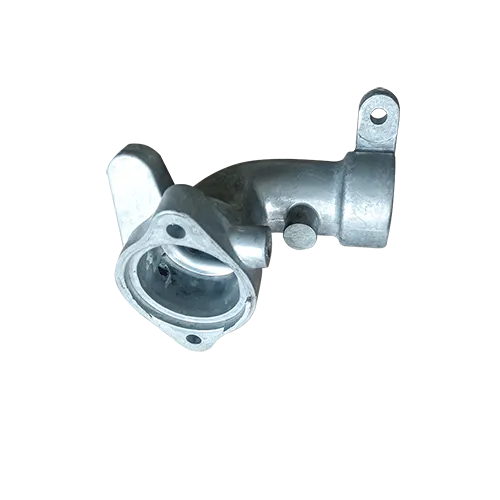Mobile:+86-311-808-126-83
Email:info@ydcastings.com
what is the die casting process
Understanding the Die Casting Process
Die casting is a manufacturing process that involves the injection of molten metal into a mold cavity under high pressure. It is a popular technique used to create precise metal parts with intricate shapes, often utilized in various industries including automotive, aerospace, and consumer products. This article provides an overview of the die casting process, its advantages, and applications.
The Die Casting Process
1. Mold Design The first step in the die casting process is the design of the mold. The mold is usually made from steel, which allows it to withstand the high temperatures and pressures involved in casting. A good mold design is crucial as it determines the final product's precision and surface quality. The mold can consist of multiple sections that allow for the easy removal of the cast part.
2. Melting the Metal Various metals can be used in die casting, with aluminum, zinc, magnesium, and copper being the most common. The chosen metal is heated in a furnace until it reaches its melting point. Careful temperature control is essential; if the metal is too hot, it may degrade, while if it's too cool, it may not flow properly into the mold.
3. Injection Once the metal is molten, it is injected into the mold. This injection is performed using a die casting machine that can apply high pressure (ranging from 1000 to 10000 psi). This pressure ensures that the molten metal fills every part of the mold cavity, leading to finely detailed and dimensionally accurate parts.
4. Cooling and Solidification After the mold is filled, the metal begins to cool and solidify rapidly due to the cooler temperature of the mold. The cooling time depends on the thickness and material of the part. It is essential to maintain consistent cooling rates to prevent defects such as warping and cracking.
5. Ejection Once the metal has solidified, the mold opens, and ejector pins are used to push the cast part out. The quick removal of the part is necessary to reduce downtime in the production process and prepare the mold for the next cycle.
6. Finishing After ejection, parts often require finishing processes. These may include machining, surface treatment, or painting to enhance appearance and provide additional properties like corrosion resistance.
Advantages of Die Casting
what is the die casting process

Die casting offers several advantages compared to other metal manufacturing processes
- High Precision and Tolerance The process allows for thin walls and complex geometries, leading to highly accurate components. - Production Efficiency Die casting can produce large quantities of parts quickly, making it an efficient option for mass production. - Material Utilization The process minimizes waste, as the molten metal can be reused, making it a cost-effective method over time.
- Surface Finish Parts produced by die casting often require minimal finishing, thanks to the smooth interior surface of the dies.
Applications
Due to its benefits, die casting finds applications in various sectors
- Automotive Used for engine blocks, transmission cases, and structural components. - Aerospace Creates complex parts crucial for aircraft functionality and efficiency. - Consumer Electronics Produces casings and components for devices like smartphones and laptops.
- Industrial Machinery Provides robust parts for machines that require high strength and durability.
Conclusion
Die casting is a highly efficient technique for producing complex metal parts with high precision. Its ability to manufacture large quantities of components quickly and with minimal waste makes it a favored choice in many industries. As technology advances, die casting processes continue to evolve, promising even greater efficiencies and capabilities in the future. Whether in the automotive or aerospace fields, the die casting process remains an integral part of modern manufacturing, enabling the realization of innovative designs and high-performance products.
-
Why Should You Invest in Superior Pump Castings for Your Equipment?NewsJun.09,2025
-
Unlock Performance Potential with Stainless Impellers and Aluminum End CapsNewsJun.09,2025
-
Revolutionize Your Machinery with Superior Cast Iron and Aluminum ComponentsNewsJun.09,2025
-
Revolutionize Fluid Dynamics with Premium Pump ComponentsNewsJun.09,2025
-
Optimizing Industrial Systems with Essential Valve ComponentsNewsJun.09,2025
-
Elevate Grid Efficiency with High-Precision Power CastingsNewsJun.09,2025











